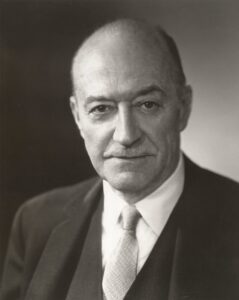Nov
24
The Problem with Price Controls
“Price-fixing always does harm and it is never a cure for inflation.” — Hazlitt & Wesbury

In May 1972, the first issue of Imprimis featured an article (“The Dangers of Price Controls”) by Henry Hazlitt, the noted author/journalist on matters of business and economics. The Federal Reserve had been printing a lot of money to fund the expansion of government — notably, President Johnson’s “Great Society” –, and their response to the resulting rapid inflation was to implement controls on prices and wages. Hazlitt, of course, tried to be a voice of caution and reason.
Similarly, recent years have seen much inflation and political unrest resulting from huge government expansion in both size and scope during and after the Covid pandemic. VP Harris and others want to impose price and wage controls to outlaw what they call “price gouging”. Seeing a need to remind people of Hazlitt’s warnings, Brian Wesbury — chief economist at First Trust Advisors L.P. and a member of the Hillsdale College Board of Trustees — has produced a revised & expanded edition of Hazlitt’s original article. I present a few excerpts below…
— — —
The first thing to be said about price and wage fixing is that it is harmful at any time and under any conditions. It is a giant step toward a dictated, regimented, and authoritarian economy. [Any arrangements that both sides are willing to agree to are made impossible.] It sets aside contracts that have already been made in good faith. If an employer wishes to give a man a raise in pay, and the man deserves it, he is nonetheless forbidden to do it under the new regulations. This is a grave abridgment of individual liberty.
Price and wage fixing does harm even if there is no inflation. In a free economy prices are constantly changing. They are changing to reflect changes in supply and demand, in costs, and in a hundred other conditions. Some prices are going up, other prices are going down. If an effort is made to freeze prices and wages exactly where they are, it immediately disturbs the relationship of prices and comparative profit margins, which decides what things will be made and what quantities they will be made in. It upsets the process by which the free market decides how thousands of different commodities and services are to be made in the proportions in which people want them.
Of course, if we are in a period of inflation, price fixing does immensely more harm. It is never a cure for inflation. Rather it is an attempt to direct the blame away from government. What causes inflation is an increase in the supply of money and credit. This is often brought on, directly or indirectly, by government policies — especially when the Federal Reserve decides to print new money to fuel government deficits.
Since the onset of Covid, government deficits have soared to spectacular levels. Roughly $5 trillion of new debt was issued to pay people not to work and to buy vaccines, as well as to fund Green New Deal policies. The massive spending bills that accomplished this were cynically called the “CARES Act” and, comically, the “Inflation Reduction Act.” Even in the past two years, with the pandemic over and the unemployment rate down near four percent, the government — in adopting what may be the most irresponsible budgets in U.S. history — has been running deficits as high as $2 trillion.
These deficits have mostly been financed by the Fed’s creation of new money….

Proposals to address this monetary inflation with price fixing, if carried out, will lead to shortages and a profit squeeze and will tend to distort and reduce production.
Sometimes people talk as if it would be possible to have universal price fixing. That is to say, the government would fix every wage, every price, and every cost. This is absolutely impossible. While nobody knows how many separate prices and wages there are, there are good reasons for thinking that there cannot be fewer than about ten million. If you try to fix ten million prices, what you are trying to fix is something on the order of 50 trillion cross-relationships of prices. This is something that no government is capable of determining — or policing. If government could police it, government would have to impose rationing and allocation of individual goods in order to keep prices where they were if it kept increasing the money supply. And even then, the whole project would be impossible for the simple reason that the government cannot control prices of imports. And it would not know how to pass these increases in import prices through the economy without creating disruptions and distortions….
[A] president today could pretend to control prices for a fixed period. But the trouble with controlling prices for a fixed period is that if you continue to increase the money supply — and if all the other factors are what they were — then at the end of that fixed period, prices will jump to where they would have been anyway. When the Nixon administration recognized this in 1971, it had to extend the wage and price controls in order to avoid criticism that the 90-day price control policy was pointless. The extension was called Phase Two.
Nobody knew when Phase Two would end….
What the government ought to be doing to counter inflation and get prices low is to free and encourage the producers — not to put them in a straitjacket by fixing prices.
Price and wage fixing is always harmful. There is no right way of doing it. There is no right way of doing a wrong thing. There is no fair way of doing something that oughtn’t be done at all.
We can’t even define a fair price or a fair profit or a fair wage apart from the market or apart from the state of supply and demand. Instead of talking about “fair” prices, “fair” profits, and “fair” wages, we ought to be talking about functional wages, functional prices, and functional profits. Prices have work to do. What they do in effect is give the necessary signals to production. They direct production into the things that are most wanted socially, to provide a balance among the thousands of different commodities and services in the proportions that the consumers want them.
Price fixing destroys the signals on which this ever-changing balance depends. It always does harm. And it is never a cure for inflation.
Not only is price fixing never a cure for inflation, but in the long run it prolongs and increases inflation. Quack cures divert attention from real causes and real cures. The real cause of the inflation we have been experiencing has been the increase in the supply of money resulting from the Fed monetizing the enormous deficits we have been piling up….
— — —
Even with the Trump administration replacing the Biden regime in a couple months, there’s no guarantee that he won’t fall for the “solution” of price fixing, too. (He’s already been deluded by the blunt tactic of using tariffs.) The full article, which includes more specifics about the conditions and activities in the early-1970s (and preceding) as well as in recent years, can be found here.















